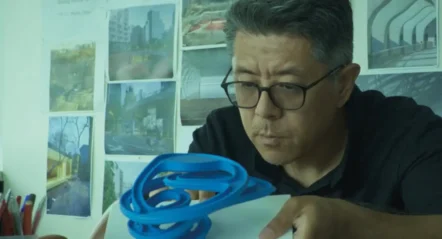Extraordinary Fossil Reveals the Oldest Known Ant Species
Discovery of 113-Million-Year-Old Fossil in Brazil Reveals the Oldest Known Ant Species, Offering New Insights into the Evolution of Insects During the Age of Dinosaurs.

April 24, 2025 – São Paulo, Brazil. In a groundbreaking discovery that rewrites the history of one of the world’s most familiar insects, scientists have uncovered the fossil of the oldest-known ant species, Vulcanidris cratensis, dating back an astounding 113 million years. The fossil, found in northeastern Brazil, provides new insights into the ancient evolution of ants and offers a glimpse into life during the Cretaceous period when dinosaurs roamed the Earth.
This extraordinary discovery was published in Current Biology, and it pushes back the clock on ant history by 13 million years, challenging previously held assumptions about the origins and diversification of ants. The specimen was discovered preserved in the limestone deposits of the Crato Formation, a site well-known for its exceptional fossil record.
The Vulcanidris cratensis belongs to the extinct subfamily Haidomyrmecinae, known as the “hell ants.” These ants were unlike the species we are familiar with today, possessing unique scythe-like jaws designed to capture and impale their prey. The jaw mechanism in these ancient ants was vertical, a stark contrast to the horizontal jaw movements of modern ants. The fossilized specimen, measuring about 1.35 cm in length, showcases the fine details of its anatomy, which offer clues to its behavior and role in the ecosystem millions of years ago.
The discovery provides important evidence supporting molecular estimates that place the origin of ants between 168 and 120 million years ago. With this newfound knowledge, scientists believe ants began to diversify much earlier than previously thought. This fossil bridges a significant gap in the timeline of ant evolution, reinforcing the idea that these insects were already playing a crucial role in ecosystems alongside other prehistoric creatures, including dinosaurs.

Implications for Evolutionary Biology
The Vulcanidris cratensis fossil is more than just a remarkable specimen; it reshapes our understanding of insect evolution. The fact that ants, a group so pivotal to modern ecosystems, were already thriving during the age of dinosaurs indicates how these creatures adapted and evolved to fill niches that continue to define their role in nature today.
The Hell Ant: A Predator of Its Time
The “hell ants,” to which Vulcanidris cratensis belongs, are named for their fearsome appearance and predatory nature. The vertical movement of their jaws made them formidable predators of smaller creatures, likely using their scythe-like mandibles to capture and impale prey, similar to how modern ants use their mandibles for cutting and manipulating food.
This new discovery provides a snapshot of how ants interacted with their environment millions of years ago, offering crucial data for paleontologists and evolutionary biologists. Understanding the evolutionary path of ants and their diversification during the Cretaceous Period helps trace how these insects have survived and flourished over millions of years, adapting to various environmental pressures.
Next Steps in Paleontological Research
The discovery of Vulcanidris cratensis is expected to spur further research into the fossil record of ants and their evolutionary timeline. As scientists continue to study this ancient specimen, they hope to gain deeper insights into the behaviors, diets, and ecosystems of early ants, shedding light on how such small creatures have shaped the planet’s biodiversity.
For now, this exceptional find reminds us of the remarkable history hidden beneath our feet, waiting to be uncovered by those curious enough to look.
Inflect.in — Your daily dose of stories that inform, inspire, and ignite curiosity. Follow us for more!
Inspire
Latest Post

AI in Healthcare: Smarter, Faster, and Accessible

Is Co-Sleeping Safe for Babies? Pros, Risks,

Pomegranate Benefits: Why Eating Anar or Drinking

Ma Yansong: Shaping the Future of Architecture

AI in Healthcare: Smarter, Faster, and Accessible

Is Co-Sleeping Safe for Babies? Pros, Risks,

Pomegranate Benefits: Why Eating Anar or Drinking








